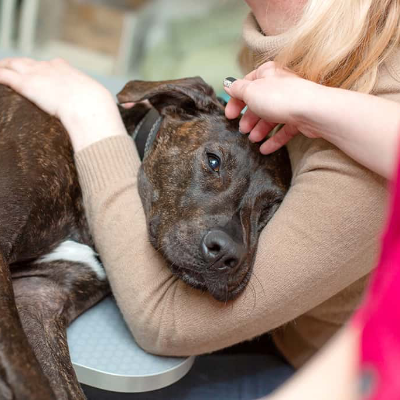How to Foster (or Adopt!) During the Coronavirus

How to Foster (or Adopt!) During the Covid-19 Coronavirus
Want to help homeless pets while you’re on lockdown? Here’s what to expect.
Pet lovers have really been stepping up during the coronavirus lockdown. Consider these facts:
- In New York and Los Angeles, the ASPCA has seen a 70% spike in fostering – when people care for animals in their homes until they get adopted.
- Animal Care Centers of New York City got 3,500 applications for fostering in one week in March. (It was expecting 50.)
- According to the PetHealth database, which covers 1,400 animal shelters and welfare groups nationwide, pet adoptions in March are up 100% over last year.
Surprising? Not really. A pet can be the perfect companion when you’re working from home. And in a crisis like the coronavirus outbreak, pets can help ease stress. No wonder people want to cuddle up with a sweet fur-friend right now.
Wanting a Homeless Pet vs. Actually Getting One
That said, there are some things to know about taking on a pet during a pandemic:
1. Expect delays.
Yes, it’s true there are always millions of homeless pets needing care. However, animal shelters and rescues have to practice social distancing, too. Also, there may be fewer staff members onsite. What does all this mean?
- Limited hours
- Adoptions by appointment only
- Fewer openings per day to meet pets
- Possibly no special adoption events
Your local shelter might even be closed. If that’s the case, you might be meeting your new pet at a foster home.
Being flexible about when, where, and how you meet potential pets will pay off, and you’ll be a hero to the rescuing agency.
2. Start in cyberspace.
By going directly to the websites of shelters and pet rescue groups, you can:
- View pets who need homes
- Apply to volunteer or foster a pet
- Apply to adopt a pet (and pay any necessary fees)
All the “red tape” can be taken care of online, in advance. Which is convenient. But be patient while the shelter or rescue group processes your information. It may take several days to get back to you.
Tip:Start with WeRescue app to search for pets near your Zip code. You can filter thousands of animals by age, sex, and personality traits like “gentle,” “goofy,” “OK with kids,” etc. When your search pulls up a list of animals, just click on each pet to see the shelter or rescue group caring for it.
3. Fostering a Pet? Tell the Organization What to Expect.
Shelters and rescue groups are ecstatic that so many people are fostering and adopting. They’re also concerned about the future. When people go back to work, will they see a sudden influx of returned pets?
Nobody knows yet. If you expect to return your foster pet when you return to your office, be sure to tell the shelter or rescue group up front. It will help them plan.
If you’re adopting, be sure the pet you pick will be OK while you’re at the office. Is it housebroken or litter-trained? Does it have separation anxiety? Will you need to separate it from other pets in the house? Will you need a dog walker?
A high-energy dog might even do well with full- or part-time doggie daycare (although almost all dogs can benefit from that, with the socialization and playtime they get).
Before adopting, talk to the rescuing agency about your needs. They can help you pinpoint which animals may adapt to your daytime absences more easily.
Other Ways to Help Homeless Pets
If you can’t adopt or foster, you can still help! Animal shelters and rescue groups can always use:
- Donations (especially this year)
- “Wish list” items like litter, bleach, and food
- Volunteers to help out later, when the lockdowns lift
- People who share pet profiles through texting, email, or social media






